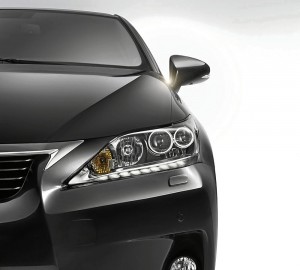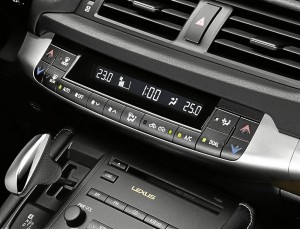
THE CT200H works perfectly as a halfway house technology of sorts that bridges the gap between the cars of yesteryear and the possible cars of the future.
In the documentary “Who Killed the Electric Car” released in 2006, its director Chris Paine explores the brief history of the electric car, specifically the General Motor’s EV-1 vehicle, and how California, specifically the California Air Resources Board (CARB) mandated that if a car company wished to continue selling gasoline-powered vehicles in California, these same car companies must release a zero-emission electric powered vehicle available to the public for sale or long-term lease. A truly noble effort from that state, but was repealed after continuous lobbying and pressure from big business, the car manufacturers, oil companies and other disenfranchised parties heavily entrenched in the manufacture of gasoline-powered vehicles. A sad reality indeed. It’s an interesting documentary, one that any car enthusiast, industry watcher or tree-hugger should look into.
But where does that leave hybrids like the Lexus CT200h?
The hybrids seem to be a stop-gap measure, a halfway house between the fossil-fuel powered vehicles of yesteryear, and the hopefully zero-emission vehicles of tomorrow that might run on hydrogen, solar-power, or back to full-electric propulsion. But alternative propulsion in all its fullness will perhaps take another generation to come into fruition simply because the necessary supporting infrastructure will take even longer for tertiary parties involved in the industry to catch on.
Halfway house or not, the Lexus CT200h is a hoot to drive, slow or fast. Let’s get the fast part out first. The CT200h has four driving modes: EV or electric vehicle mode, ECO mode, Normal Mode and Sport Mode. In EV mode, the CT200h relies on full electric power. In ECO and Normal Modes, it’s a mix of lean-burn gasoline powered propulsion and/or electric mode, depending on load, driving conditions and throttle opening/position. But in Sport Mode, thanks to combined gasoline and electric power, the CT200h drives like a torque-rich 1.8-liter 5-door hatchback that serves up instant power, thanks also in part to its CVT transmission that is willing to play as it is to be sedate, depending on your mood. Floor it and the CT200h zings very enthusiastically and, thanks to the sports-tuned suspension, it has the legs to match its heart, criss-crossing slower-moving vehicles in heavy EDSA traffic. You’d think it had more power than the advertised 136 hp from the combined gasoline and electric powertrains.

SOFT touch plastic cover the dash, sidings and the excellent sound system with Bluetooth mobile phone integration.
But on the environmental front, the CT200h works devastatingly efficient. In any mode aside from Sport, you have to realize that hybrids require a certain tempo to drive, and even drive quickly. Think of it as a computer video game, where you need to start off slowly but surely, as steadily as can be, and gather your pace firmly. Make no mistake, the CT200h is capable of going well past 160 kph if unrestricted, probably edge closer to 180-190 kph. Moving off from a standstill is usually via electric propulsion so you move eerily quiet, but as throttle opens up past 30 percent and speeds climb past 40 kph the gasoline engine can take over propulsion. The CVT prefers to be as efficient as possible; you feel the speed climb slowly but surely, but the entire drive system feels relaxed at almost all times. But this silence is also equally dangerous: You need to be on your guard and quick with your feet to step on the brakes, and your hands to honk the horn as jaywalking pedestrians will almost literally throw themselves at the CT200h’s front end since they can barely hear you.
The interior is all Lexus: soft touch plastics cover the dash and sidings, an excellent sound system with Bluetooth mobile phone integration and MP3 connectivity is standard, and the seats, though covered in high-quality fabrics instead of leather (available on the higher-variant CT200h F-Sport) are the most comfortable and supportive seats I have ever tried, perfect to soothe my aching back. The rears, unfortunately, aren’t as roomy as I would like them. Toyota Prius-C, an even smaller car than the CT200h, seemed to have more space. The trunk, though, is as big as golfbags can fit.
The CT200h is built on Toyota’s MC platform, which it shares with the RHD market Auris and Corolla—which is smaller than our equivalent Altis—and is built in Toyota’s Miyakawa Factory in Fukuoka, Japan. The front utilizes a Macpherson strut suspension, but the rears use a double-wishbone suspension in lieu of a cheaper torsion bar, to give better control, performance, stability and comfort at higher speeds. The CT200h comes with eight airbags (dual front airbags, front side-seat airbags and curtain airbags that span the length of the cabin) as standard and a Vehicle Stabilty Control that integrates ABS-EBD brakes with traction and stability control.
The CT200h works perfectly as a halfway house technology of sorts that bridges the gap between the cars of yesteryear and the possible cars of the future. It has very low emission, very efficient power and low consumption, the metal hydride battery is charged by regenerative means (via coasting or braking in about 30 minutes of driving), and doesn’t require a large supporting infrastructure for battery charging and the like. That it is surprisingly fun to drive seals the deal despite carrying a hefty price tag. Make no mistake, it’s a Lexus through and through with its comfort and refinement. Yet it offers a driving experience that is engaging and enjoyable, which can’t be said for all Lexus cars. Sure it is expensive, but a Lexus isn’t for everyone. I never got to try it out of town but fuel economy was a good 14 km/liter in purely city driving. Now that’s having your cake and eating it too!


